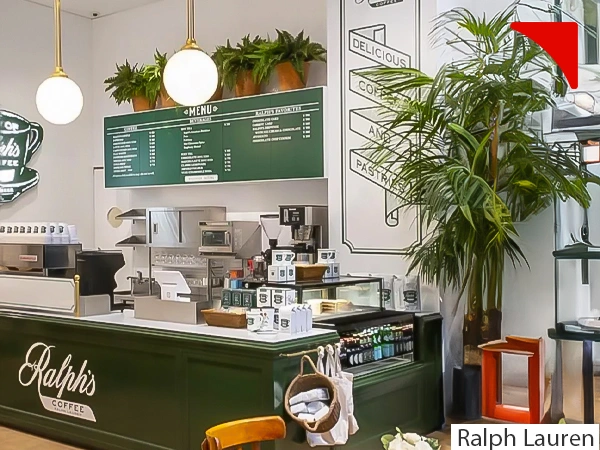ACQUIRING MARKETS WITH POP-UPS & CAPTURING THE NEW AGE CONSUMER

The world that we live in is changing. Consumer attention is fleeting, competition is fierce, traditional marketing channels are increasingly saturated, digital advertising is ubiquitous, brand loyalty is difficult to maintain and consumer preferences are constantly evolving.
In today’s rapidly changing world, capturing consumer attention has become more challenging than ever. With fleeting attention spans, fierce competition and saturated traditional marketing channels, brands must navigate a complex landscape. Digital advertising is ubiquitous, thus making it difficult for brands to stand out online. Additionally, maintaining brand loyalty is a formidable task as consumer preferences shift at an unprecedented rate.
Therefore, capturing consumer’s attention has never been more competitive. In a bid to outcompete, brands are directing a significant chunk of their revenue towards advertising. Last year, it was estimated that the global spend on advertising was close to $883bn, a YOY growth of ~5%. With the latest preference being given to video-driven short form advertising, and brands jumping on the bandwagon as soon as they can.
Thus, a question arises, “How do we acquire the market?”. The answer that arises, with strong trends behind it is the emergence of popup shops and innovative shop design as a tool. These dynamic retail spaces offer unique opportunities to create memorable and immersive experiences, engage with audiences on a deeper level and drive significant market acquisition without significant financial investment.
Several trends have shaped the pop-up shop design landscape in the recent past. By understanding these trends and their catalysts, we can identify key strategies to incorporate into our own pop-up shop designs.
1. Hyperphysical experience

Burberry, a London-based luxury brand, unveiled a 7 meter tall figure of their Lola Bags with its unmistakable beige and quilted stitching, in China. Gold link chains stemming from the bags acted as displays and seating, making the entire fixture a perfect place for a photo-op.
Like Burberry, brands are betting on hyperphysical shop design to create a powerful impression and inspire awe. The timing was key, as shoppers heading out of their homes post pandemic had pent up excitement and a hunger for experiences.
2. Cafe fusion

Coach collaborated with a local restaurant in Singapore and called it Two Men Bagel House in a bid to recreate a bagel shop straight out of New York. Celebrating their 2022 spring collection, as well as paying homage to their hometown, the shop offered a conservative, Coach-inspired menu.
The popularity of these co-creations is driven by their novelty, thus the brands will have to go a step-ahead in their shop design instead of the usual “here’s our menu and here’s our name’ approach. Shop design should try to gamify and interact, be it through activities-in-shop or a workshop, to create original experiences.
3. Resort-based collaboration

Dior unveiled its Dioveria Collection 2022 at the Four Seasons Jimbaran Bay’s Sundara Beach Club in Bali. The brand undertook a massive project, redesigning over 1300 sq. mt. and 2 storeys within, redoing pool-side and dining, upholstery and even the ceiling in the collection’s blue and orange.
Catering to the above-mentioned pent-up excitement within, the brands are leveraging this revival in travel through collaborating with resorts in tourist hotspots and enhancing their shop design to sell not just products, but a feeling.
4. Outdoor recreation

Ralph Lauren underwent a revamping project for their Ginza store, in Tokyo, and turned it into a mini tennis court, thereby tying it with the start of Wimbledon 2022 and nudging them to the fact that they’re also the official outfitter.
The boom for outdoors has been on an upward rise, ever since the pandemic ended, influencing shop design trends towards incorporating sports like skating, golf, tennis, and even camping. Ralph Lauren incorporated concepts of gamification and created an experience that encouraged play and activity.
The trends we’ve explored demand a radical shift in traditional shop design. It’s no longer about showcasing products; it’s about crafting immersive environments that resonate with the audience.
For hyperphysical shop design activations, the design should prioritize impact and memorability. This requires bold, unexpected elements, such as large-scale installations or interactive displays. The space should be designed to facilitate social sharing, with ample opportunities for photography and video content creation.
The cafe collaboration calls for a flexible shop design that can seamlessly transition from a retail environment to a dining area. Shop design should focus on creating a warm and inviting atmosphere, with elements that reflect both brands while incorporating interactive elements, like DIY stations or product customization areas, that enhance customer experience.
Resort shop design demands a luxurious and escapist environment. Biophilic design elements, such as natural materials and greenery, can create a sense of tranquility. The space should be designed to complement the resort’s aesthetic while showcasing the brand’s identity.
For outdoor playgrounds, the design should be adaptable and versatile. The space should be designed to accommodate different activities, from product demonstrations to workshops. Durable and weather-resistant materials are essential. Incorporating elements of nature, such as artificial turf or living walls, can enhance the outdoor experience too.
Beyond these specific trends, there are overarching shop design principles as well that can be applied to all pop-up stores:
- Flexibility: Pop-up stores have a limited lifespan, so the design should be adaptable to different products and campaigns
- Technology: Integrating technology into the design can create engaging and interactive experiences
- Sustainability: Using eco-friendly materials and minimizing waste is becoming increasingly important for today’s customers
- Storytelling: The design should tell a compelling brand story and create an emotional connection with customers